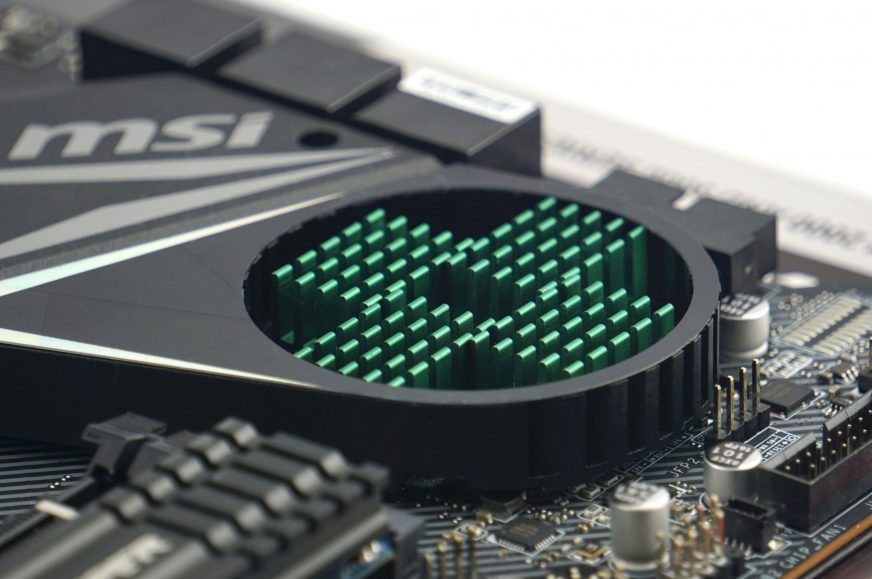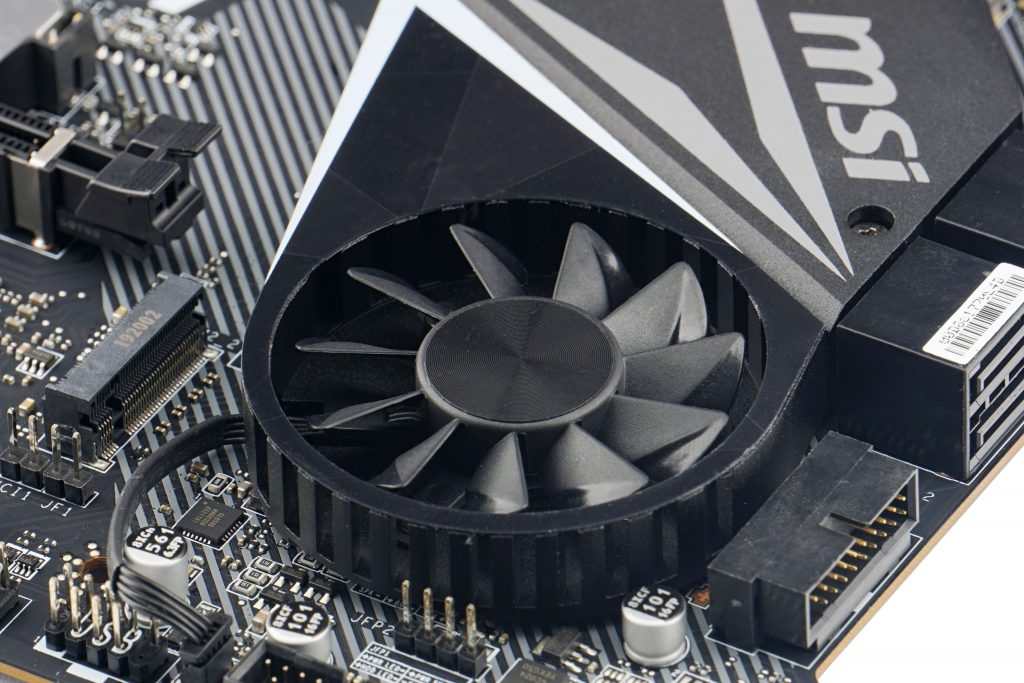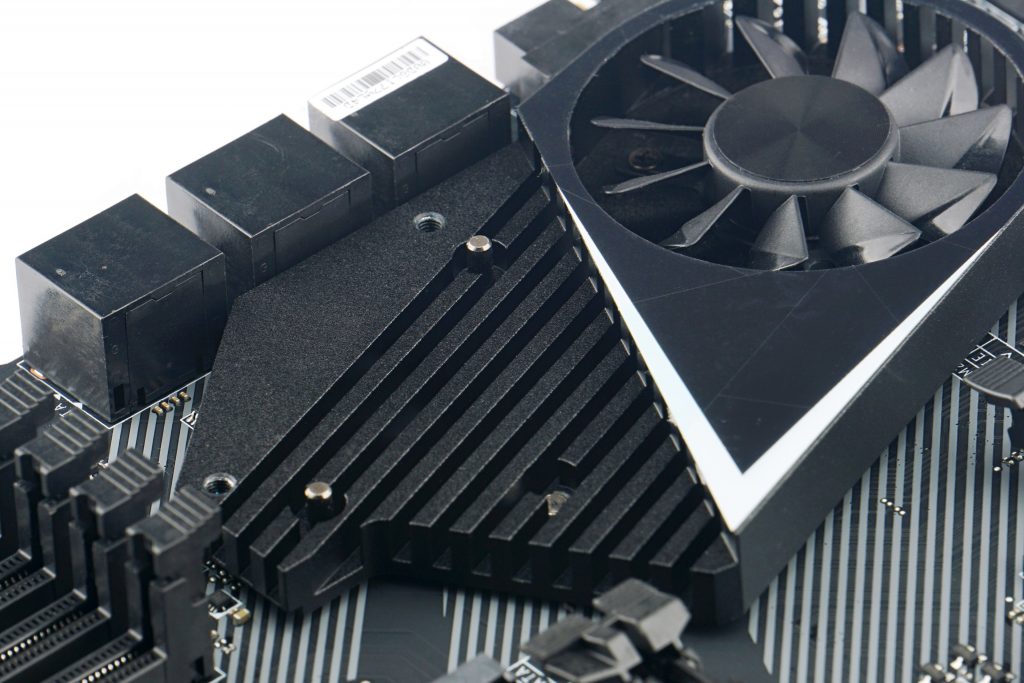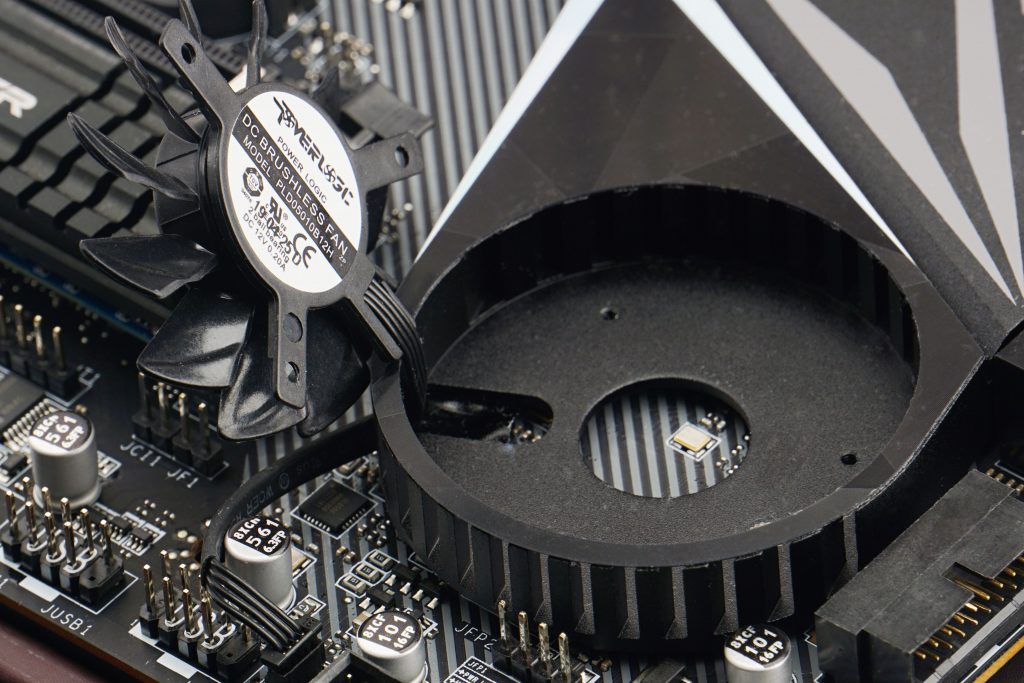Description and test results
The hated fans in the AMD X570 chipset cooler would rather be turned into a proper heatsink by many users. In reality, however, it is not as easy as it may seem. Why don’t manufacturers do it on their own? We tested different speed modes with a fan and compared them with a pure heatsink and also one supplemented by small passive coolers with needles.
The issue of cooling the most packed and energy-intensive chipset today is relatively complex. Among the discussants there are also opinions that the installed fans are used meaninglessly (and that the manufacturers most likely did not test it at all, and so on). And when the fans are still of the axial type, the whole thing is also extremely inefficient, because the blades do not push directly between the fins, but first below each other and only from there, secondly, the air gets between the fins, but at the cost of higher noise and lower static pressure. This may or may not be the case, as evidenced by a recent test comparing an axial fan with a radial fan.
This time we will look at what can happen when you remove the fan from the structure and stick other heatsinks in its place, thus expanding the radiating/absorbing surface. How much will they improve purely passive cooling? And in general, with such a “modification”, will the cooling capacity already be higher than with the factory setting, which almost always counts on the fan? These are the questions that have been making your and our heads spin (thanks to Mino for the tip!) in the last few days. Let’s take a closer look.
One of the most suitable motherboards (if not the most suitable) for such a test is the MSI MPG X570 Gaming Edge (WiFi). Firstly, because it has an axial fan that does not inspire confidence. In addition, it can be very smoothly removed and installed back without any sign of intervention. There is no grid or anything in front of it that requires more destructive disassembly. And most importantly, there is a fairly large 50mm fan (most motherboards have a smaller one), so it will fit more material in its place.
This aluminum cooler is grooved, or in other words, has relatively thick fins (covered by part of the M.2 SSD’s heatsink), through which the air flows. The cage around the rotor is also perforated for better airflow.
How we test
The basis is a testing set with an AMD Ryzen 5 3600 processor with an active PBO cooled by Noctua NH-U12A@12 V, a Sapphire Pulse Radeon RX 5700 graphics card and two PCIe SSDs – Samsung 970 Evo and Patriot Viper VPN100. This configuration consumes approximately three hundred watts when running Cinebench R20, FurMark (stress test in FHD) and looped sequential SSD testing in AS SSD.
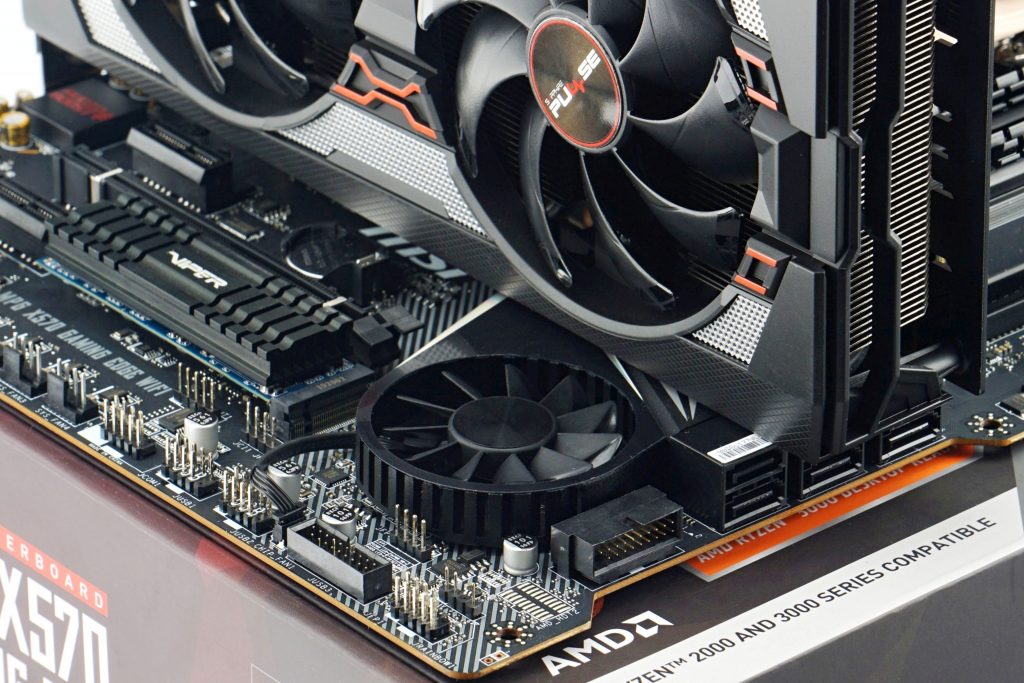
The tests, of course, take place in the editorial wind tunnel with Noctua NF-A12S fans. These are always in a balanced ratio of two (at the input) to two (at the output). However, to give you a better idea of how system cooling can affect chipset heating, we measure everything with the fans being set to about 970 rpm (9 V), 800 rpm (7 V), and 610 rpm (5 V). The air temperature at the entrance to the tunnel is always in the range of 21 – 21.1 °C.
First, we test in active modes with a fixed setting of higher and lower chipset fan speeds – 4300 rpm (53.7 dBA@10 cm) and 2150 rpm (36.3 dBA@10 cm). There are four passive modes. With the fan removed, but still without added VRAM heatsinks and with added VRAM heatsinks. And both are in two other ways – with the preserved SSD M.2 heatsink and without it (i.e. already with uncovered fins). The abbreviation ‘HS’ in graphs means heatsink(s).
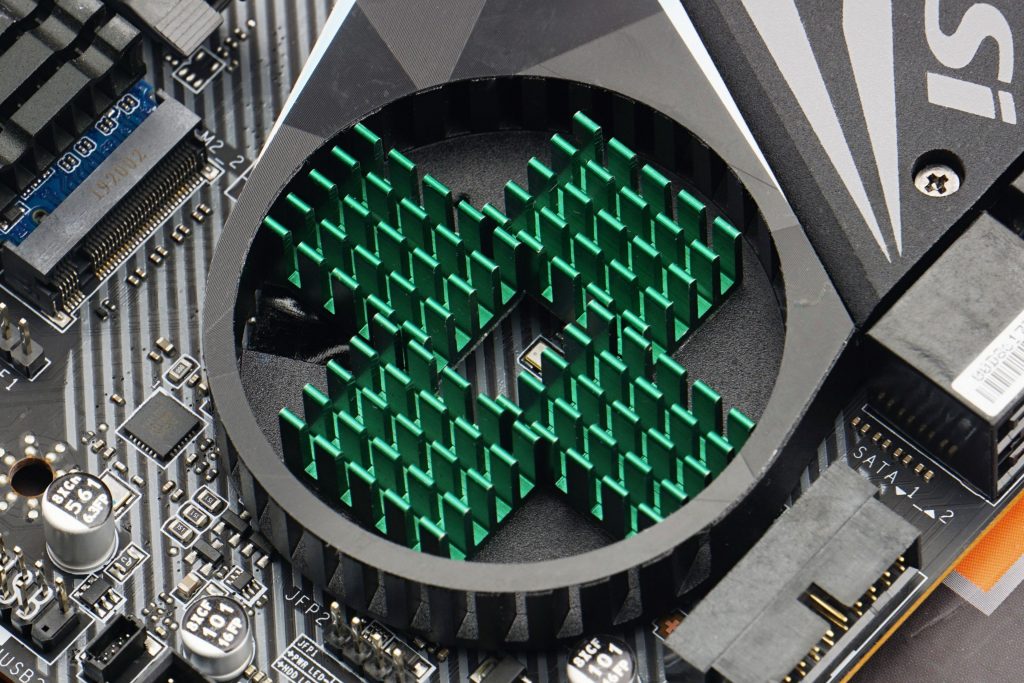
Each of the modes is subjected to a 45-minute load, with the rpm decreasing every fifteen minutes. Temperatures are read (and written to the tables) before each further speed decrease, and at the end right before the end of the test.
Results
Anyone who has so far believed that heating with VRAM heatsinks will be lower than in active mode is probably disappointed. Temperatures with a fan are significantly better (by 6–8 °C) even at slower rpm and still relatively low noise. And it should be noted that with increasing flow rate, the cooling capacity scales relatively well, and with twice the rpm, you can cool the chipset by up to another six degrees Celsius. However, it should also be noted that at such a fan speed, the operation is already really noisy – 53.7 dBA (from ten centimeters) is quite an unpleasant noise.
The comparison of results from passive regimes is remarkable. While in the case of an empty fan hole at the most intense system cooling, the heating is still a good degree of Celsius lower compared to the configuration with extra heatsinks. However, with weakening airflow, these ratios change and in the slowest mode the situation reverses, a degree lower temperatures are with the use of additional heatsinks.
We explain this by the fact that at a faster flow (4× ~970 rpm) the air is better directed and forced into the channels of the original heatsink when the hole after the fan is empty. After its filling, the heatsinks function as a barricade before the heatsink’s fins, which in the end leads to lower efficiency of the entire cooler. The fact is that the total absorption area is larger and its benefit is shown only at weaker (4× ~610 rpm) and already quieter system cooling, i.e. as most of you have it. Under such conditions, a larger total absorption area already wins. One way or another, the weak air flow is no longer forced through the original “pipe” of the cooler. Interesting conclusions, right? Disassembly of the SSD heatsink with direct blowing of the fins has basically no effect on the cooling of the chipset, in the order of tenths of a degree Celsius. However, cooling of the powerful NVMe SSD will suffer significantly after such an operation, so we do not recommend such a modification under any circumstances.
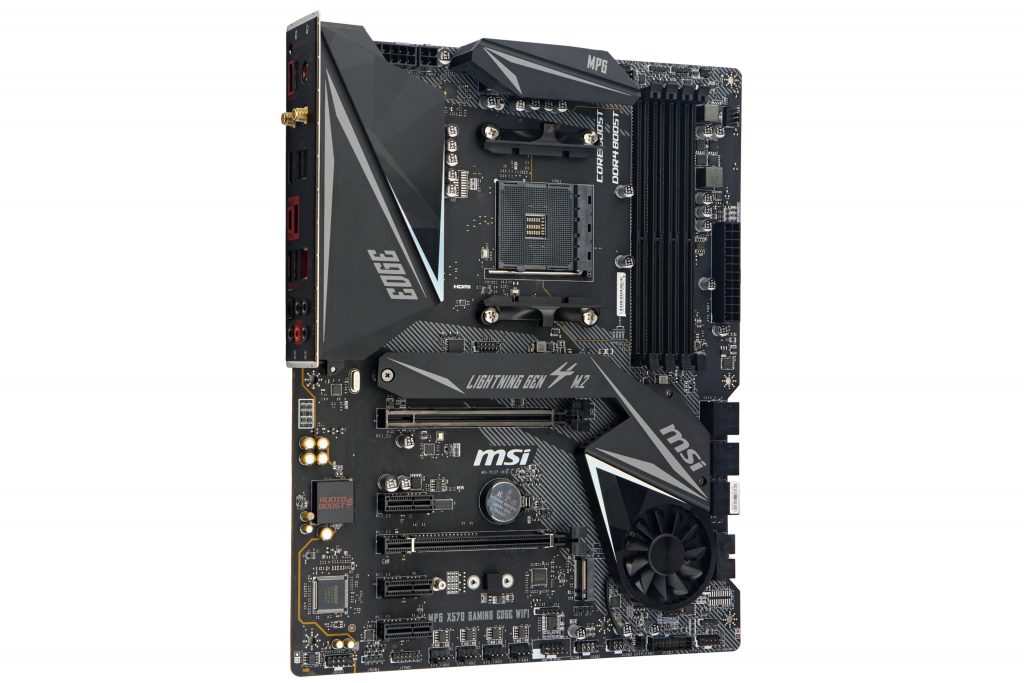
- Contents
- Description and test results





